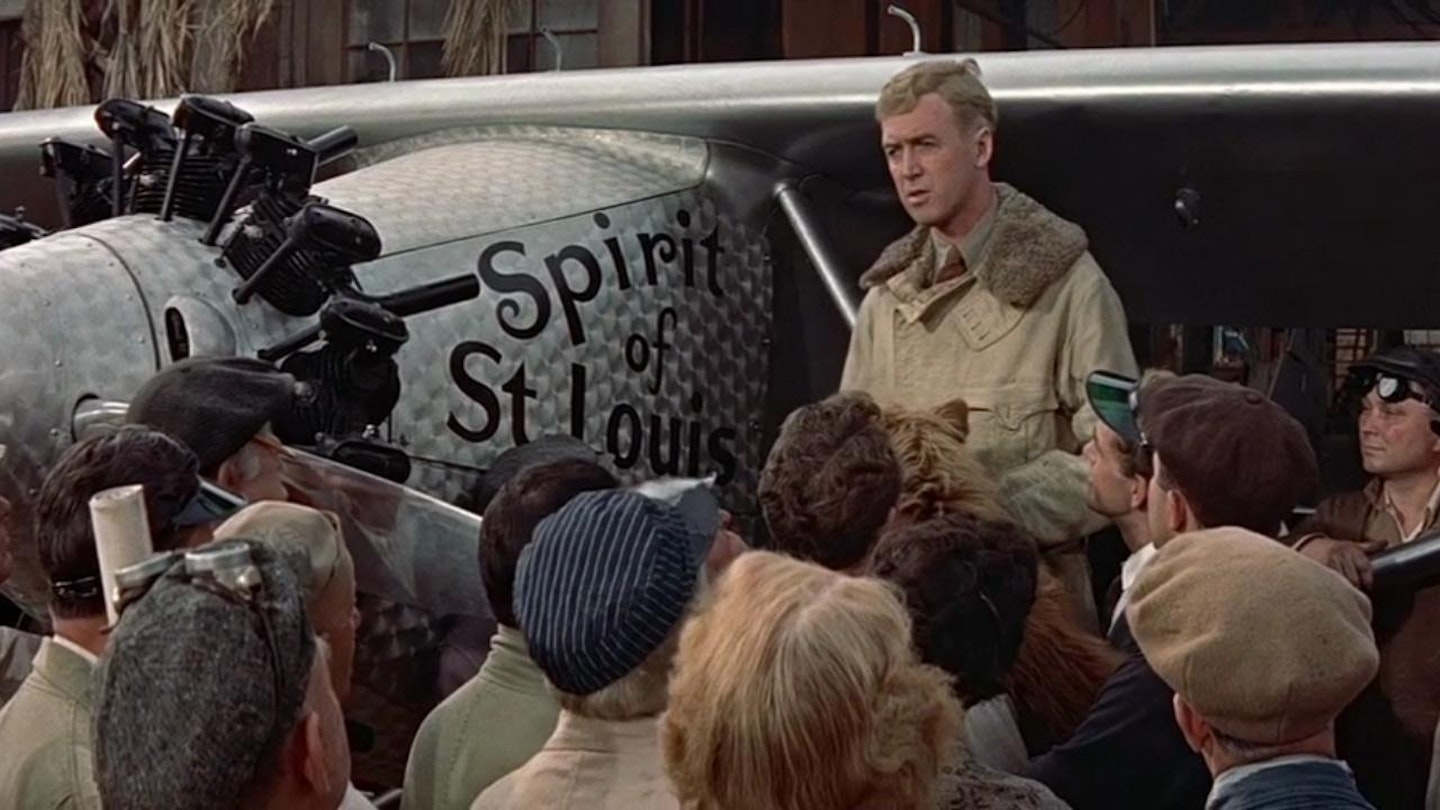In 1927, the 25-year-old Charles Lindbergh, equipped with 451 gallons of gas, two canteens of water and four sandwiches, completed the first solo trans-Atlantic flight in his plane The Spirit of St Louis. Over 100,000 people were there to greet him in Paris and he returned home to a New York ticker tape parade and was acclaimed a true American hero.
But by the time this film was released thirty years later, to a critical and box office drubbing, Lindbergh was seen as a more complicated character. He was a rich man and had married an Ambassador’s daughter, but fame had led to their first son Charles being kidnapped and killed and before the World War II Lindbergh was active in the Isolationist movement making a speech that identified three groups as unwisely advocating the war “the British, the Roosevelt Administration and the Jews.”
Is it any wonder this film had a negative reception? Added to the raw feelings the post-war public may have had about Lindbergh, was the casting of James Stewart (in a role James Dean had considered before his death) – a man of almost 50, twice as old as the flier.
Yet the best parts of this film are Stewart’s monologues in the cockpit, articulating the internal workings of a man trying to keep himself awake (for thirty three and a half hours), calculating out if he can technically stop flying long enough to scrape ice off the wings and picking a fly as a conversation partner. If Tom Hanks was modelling his Cast Away performance on anyone it was Stewart.
Wilder’s picture is characteristically talkly – if you want airplane action Howard Hughes is your man, Wilder was all about what made Lindbergh tick. So while it never quite captures the excitement of the flight, what this film does nail is the mental processes that made it possible and, as a slice of history, it’s well worth it for that alone.
